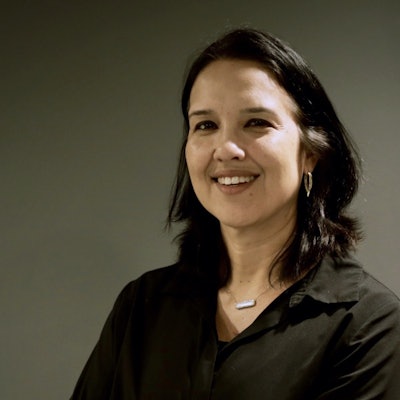A majority of higher education faculty view managing multiple modalities of a course for online and/or in-person needs as their biggest challenge, according to a new report from educational content company Cengage. Thais Alencar
Thais Alencar
The 2022 report, “Faces of Faculty: The Higher Education Instructor Experience,” is composed of findings from asking 1,025 faculty at 581 U.S. higher ed institutions – both two- and four-year – about how their job responsibilities and satisfaction today compare to those of three to five years ago.
Demographic breakdowns of those interviewed in the study showed that 77% of respondents identified as white, 8% as Southeast or East Asian, and 2% as Black, Afro-Caribbean, or African American. The study’s populations aligned closely with current U.S. faculty populations, said Lyra Liang, the report’s lead researcher.
The majority of respondents were female, 54%, and most were full-time professors, 56%.
The COVID-19 pandemic and the subsequent shifts from in-person to virtual/hybrid learning has warped instructor responsibilities, the report noted, with 80% of respondents saying their role as an educator has dramatically changed compared to 3-5 years ago.
“We are seeing that the pandemic has forced the faculty to completely change their style of teaching and communication with students,” Liang said. “And these sudden changes have been really stressful for some of them."
Thais Alencar, vice president of product management and learning experiences at Cengage, said that the report confirmed what Cengage had already been seeing: faculty struggling with moving into a more virtual world of learning.
Most faculty, 55%, reported that managing multiple course modalities – such as online, in-person, hybrid) has been their most challenging faculty experience. 73% said they were spending more time on online course setup now than before and 56% said they were spending more time developing lectures, articles, videos, and activities.
“Faculty have had to present course material in new ways, which has meant putting in longer hours and getting creative,” the authors of the report wrote. “New teaching formats require a careful balancing act. Time that may have once been spent on instruction is now spent on other administrative duties and course prep. Things that might have felt like minor tasks in the past are now forming a bigger part of the workday as faculty scramble to keep up. According to the vast majority of the respondents of the Digital Learning Pulse Survey sent to 3,500 two- and four-year students, faculty and administrators in early 2022, flexible course modalities are here to stay.”
As a result, Cengage has continued its focus on designing products for ease of use, access, and adoption for both faculty and students, Alencar said.
“We've been working really hard to make that easier and less time-consuming for our instructors,” Alencar said. “Our role is to enable their best work, which is in the classroom."
The report also indicated that more faculty than not, about 64%, are satisfied with their roles as educators, with most of the satisfaction, 88%, attributed to teaching, helping, and mentoring students.
Yet, 26% of faculty report feeling dissatisfied, with 70% of that subsect having considered a career change in the past 6 months, according to the report. And of those considering leaving, the vast majority, 87%, were assistant professors.
Reasons for the dissatisfaction included feeling unsupported or pressured by their institutions, feeling undervalued or underpaid, struggling with managing multiple course modalities, lacking student accountability, and student dishonesty.
Ultimately, the report called for more support for faculty.
“One theme has emerged loud and clear,” noted the authors of the report. “Faculty who are doing their best to support students in new and diverse ways may themselves need new and different kinds of support.”
Liang said that faculty expected additional support from their respective institutions.
"We are seeing that some of the comments from our faculty members through this research is that they are expecting some of the additional support from their institution, including providing professional development opportunities, some training about the technology, some of the software and hardware to help them navigate these changes,” Liang said.
The report lauded the perseverance and resiliency of faculty as they went through changes in the educational landscape.
“This research has reinforced the tremendous resilience of faculty across the country,” the authors wrote. “Through new formats, rising expectations and mounting responsibilities they showed up, gave their all — and then some. That resilience must be celebrated.”















